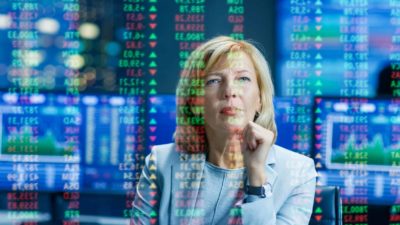Australia is at the start of an infrastructure boom fuelled by State and Federal Government spending. Sluggish economic growth in the face of multiple rate cuts has left governments with little choice but to turn to fiscal policy. Federally, $100 billion has been committed to transport infrastructure spending over the next decade in an attempt to bolster the economy.
The New South Wales Government has $93 billion earmarked for infrastructure spending over the next four years, while the Queensland Government has committed nearly $50 billion over the same period. More than $100 billion of infrastructure spending is planned or underway in Victoria. Across Australia, government and private business are investing in major projects including new roads, rail lines, skyscrapers, hospitals and wind farms.
ASX shares that could benefit
This collective rush of spending will drive demand for resources and labour. Inputs such as asphalt, concrete and quarry products will see increased usage and suppliers such as Boral Limited (ASX: BLD) may see an uptick in sales. The building and construction materials supplier could see a reversal in fortune after a difficult 2019, which saw its shares fall 12.3% in one day following the announcement of a complex transaction in late August.
Boral shares are currently trading at around $4.87, having recovered from a low of $3.94 immediately after the transaction was announced, but are still well down on the $5.70 peak they reached in July. The Australian-founded company, which has extensive operations in the United States and Asia, boasted that the August transaction, which consisted of an acquisition and sale to create a joint venture with Knauf Asia Plasterboard, would create 3–5% EPS accretion on a pro-form FY19 basis before synergies.
The market reacted with scepticism, however Boral insisted this was a "compelling investment for shareholders". The investment was considered to be in line with the company's strategic objective to increase exposure to plasterboard, which it considered to be a low capital intensive business with an attractive growth profile. Boral's balance sheet remained in reasonable shape following the transaction with a gearing ratio of <30% (which is expected to reduce over time). Net debt to earnings before interest, tax, depreciation and amortisation (EBITDA) is 2.5 times or lower and credit ratings remain at BBB and Baa2.
Boral shares have been punished by the stock market over the previous couple of years as the housing downturn started to bite. The subsequent receding in the housing construction market resulted in a reduction in demand for the supply of building materials. A decline in revenue of 1% for the Australian division in FY19 was a solid result for Boral in the face of a decline of 15% in the number of residential housing starts and a 6% decline in concrete volumes.
US and Canadian housing activity has also been subdued, impacting the performance of Boral's investment in the Meridian Brick joint venture. Boral entered the joint venture with Forterra Brick in 2017 to supply commercial and residential bricks in the US and Canadian markets. In FY19, the business took a $174 million impairment on the Meridian joint venture triggered by underperformance.
Overall, Boral reported a 4% increase in revenues and 2% increase in EBITDA for FY19, although net profit was down 7%, year on year. Management have warned that NPAT is expected to be 5–15% lower in FY20 due to high depreciation and amortisation, capital expenditure, and a cost of debt of ~4.25–4.50%.
Paying a full year dividend of 26.5 cents per share, Boral is currently yielding around 5.5%, making it a solid performer in terms of yield while also offering the potential for capital growth if demand recovers.
Housing market impact
We are seeing clear signs that the Australian market for established houses is recovering, particularly in Sydney and Melbourne. The housing construction market typically lags the housing market markedly, so we may not see a recovery in construction until 2020 or even 2021. In the meantime however, infrastructure spending could well prove to be a significant boost to materials companies. Boral's Australian division has a multi-year pipeline of major roads and infrastructure work ahead of it. Growing asphalt and concrete demand volumes are anticipated from FY20 due to major transport construction projects.
Of course, Boral isn't the only share that stands to benefit from increased infrastructure spending. CSR Limited (ASX: CSR) is another building supplier that is in a position to profit from both increased infrastructure spending and a recovery in the housing construction market.
CSR has seen its share price rise by nearly 50% from a low of $2.75 to sit around $4.24 at the time of writing. Having paid a full year dividend of 26 cents in FY19, the building products company is currently providing a dividend yield of more than 6%. CSR has capitalised on the strength of the Australian housing market over previous years to lower cost structures and improve efficiencies.
Strong operational cash flow has enabled CSR to undertake capital management activities including returning capital to shareholders through a $100 million on-market share buyback launched in March 2019. The Building Product and Property divisions performed strongly in 2019 despite the decline in construction, but were offset by diminished earnings in the Aluminium division, attributable to increased electricity prices.
Trading revenue from Building Products was up 1% despite subdued conditions in FY19, with EBIT of $206.5 million. The Property division contributed EBIT of $38.8 million, while the Aluminium division answered for $36.6, down 54% largely due to an increase of electricity related costs of $61 million compared to the prior year.
The Building Products division can expect a boost from increased infrastructure spend as well as the eventual recovery in the residential construction market. Likewise the Property division, which has a pipeline of development projects over the next 10 years, stands to benefit.
CSR sold Viridian Glass from the Building Products division in early 2019 for $222 million, realising an after-tax loss of $60.9 million; however, the sale ensured the company finished the financial year with net cash of $50 million. Another $188 million is due from two property settlements and the deferred Viridian settlement during the current financial year.
Foolish takeaway
Infrastructure spending is a classic weapon in the fiscal policy arsenal. It is a crowd pleasing method of stimulating growth, generating jobs, and improving the community's capital equipment all in one shot. The extra spending will primarily go to the companies directly involved in infrastructure upgrades and those supplying them, but from there (according to economic theory) trickle down to stimulate the rest of the economy. Companies that are exposed to infrastructure projects such as building materials suppliers stand to benefit directly as fiscal policy spend increases.








